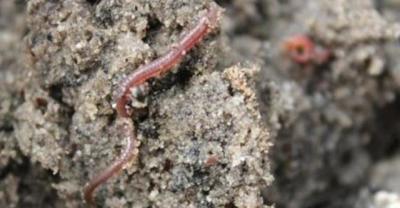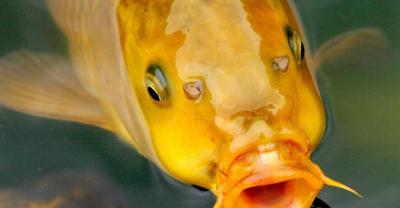Technology of culturing earthworms in feces fermented by em bacteria

Earthworms are saprophytic animals, especially like to eat fermented livestock and poultry droppings, rotten melons and fruits, banana peels, calcium-rich dead branches and leaves, etc., especially sensitive to sweet and refreshing food. Do not eat foods that contain bitterness, alkaloids and various aromatic compounds.
Type of feed and fermentation formula
(1) types
There are many kinds of feed for raising earthworms, mainly as follows:
1. Livestock and poultry manure such as horse manure, cow manure, pig manure, chicken manure and so on.
2. Plants such as rice straw, corn straw, wheat straw, leaves, sawdust and so on.
3. Household garbage, such as rotten fruits and vegetables, leftover meals, all kinds of livestock, poultry and fish viscera, etc.
4. Wastes from agricultural and sideline products, such as distiller's grains, fruit dregs, sugar dregs, dregs for cultivation of edible fungi, waste paper pulp, etc.
Note: earthworms are generally treated by composting and fermentation in order to feed on earthworms.
(2) the formula of fermentation materials
1. Fermentation raw materials: feces are mainly horse dung, cow dung, pig manure, chicken manure, sheep manure, human manure, polluted and rotten fruits and vegetables, etc., and the rotting materials are mainly plant straw, stems and leaves, weeds, garbage, etc., among which cow dung and rice straw are the best, followed by pig manure, and the proportion of chicken manure is generally no more than 20%.
2. Proportion
Formula 1: 60% manure, 40% crop straw or grass
Formula 2: 70% manure, 20% crop straw or grass, 10% wheat bran
Formula 3: 60% cow dung, 40% rice straw or wheat straw
Formula 4: 70% pig manure, 30% straw or wheat straw
Formula 5: cow dung, horse manure 50% corn straw 49%, urea 1%
Formula 6: 40% manure, 57% crop straw or grass, 2% gypsum powder, 1% calcium superphosphate
Formula 7: 70% of human feces and urine, 30% of crop straw or grass
Formula 8: cow manure or pig manure 70%, slag fertilizer or grass 20%, chicken manure 10%.
(3) starter
The use of Yifu source fecal special bacterial liquid can accelerate material decay, eliminate fecal odor, save fermentation time and improve fermentation environment. The ratio of starter to material is 300-500.
2. Fermentation treatment of raw materials
(1) treatment of raw materials
1. Mash livestock and poultry droppings.
2. Crush weeds, leaves, rice straw, wheat straw, corn straw and other plant materials, about 0.5-1 cm.
3. Cut vegetables, melons and fruits into small pieces.
4. Remove harmful substances such as gravel, rubble, metal, glass, plastic and so on.
(2) fermentation conditions
1. Temperature: temperature has an important effect on the decomposition and fermentation of fermentation raw materials. The suitable living temperature of microorganisms is 15-37 degrees, in which the optimum temperature of aerobic microorganisms is 22-28 degrees, the best temperature of facultative microorganisms is about 37 degrees, and the best temperature of heat-resistant microorganisms is 50-65 degrees.
2. Raw material water content: the water content is controlled at 40-50% (about 1000 kg of dry material needs to be added 400-500kg of water), that is, a small amount of water flows out from the bottom of the pile after accumulation.
3. Ph value: microorganisms are very sensitive to acidity and alkalinity, because excessive acidity or excessive alkalinity are disadvantageous to fermentation. The PH value is generally between 6.5 and 8.0. Excessive acid can add an appropriate amount of lime, excessive alkalinity can be washed with water.
(3) composting fermentation technology
1, pre-wetting: the Baiyibao EM solution is diluted with water (the dilution multiple is determined according to the number of fermentation materials, about one kilogram of the original liquid can ferment 300,500kg of materials) and then evenly sprayed on the forage to fully soak and absorb enough water, pre-pile for 10-20 hours. At the same time, dry livestock and poultry manure is also humidified with Baiyibao EM dilution and pre-piled.
2. Build a pile: first lay a layer of wet forage 20-30 cm thick on the ground by 2 meters wide, and then spread a layer of wet livestock and poultry manure about 3-6 cm thick. Such a layer of dung, a layer of forage, forage and dung are laid alternately until they are finished. When stacking, the diluted Baiyibao EM solution is added layer by layer, less in the lower layer and more in the upper layer, until a small amount of water exudates from the bottom of the pile. The pile should be loose, not compacted, the height of the pile is about one meter, and the material is in the shape of trapezoid, tortoise back or cone. finally, the outside of the pile is sealed with pond mud or covered with plastic film to keep warm and wet.
3. Turn the pile: the reactor temperature begins to rise on the second day after stacking, and the reactor temperature can reach 60-75 degrees after 4-5 days. When the temperature begins to drop, the second fermentation is carried out. When turning the heap, it is required to turn the material at the bottom to the top, the material at the edge to the middle, and the material in the middle to the edge, while fully mixing, mixing, appropriate amount of water, so that the period is dry and wet evenly. A week after the first turn, the second turn is carried out, and then turned every 4-6 days, about 20 days, the mature pile is finished.
(4) points for attention
1. In winter, we should pay attention to choosing warm and cold places to pile materials, and in summer, we should pay attention to the stacks to avoid direct sunlight.
2. When composting in winter, the feed should be stacked steadily because of the low temperature, so as to reduce the air circulation and adjust the fermentation speed.
3. When the material surface collapses in the process of material pile fermentation, the concave should be filled with silent raw materials in time to prevent Rain Water from infiltrating.
Fermentation is a process in which complex macromolecular organic compounds in feed are decomposed into simple low molecular organic compounds by bacteria or yeast. After fermentation, organic matter is fine, soft, rotten, rich in nutrition, easy to digest and absorb, good palatability and so on.
- Prev

Raising sika deer can also be "deer" angry.
Along the winding concrete road in the mountains, we came to the sika deer breeding base of Gao Yugui, an expert in Beixin Village. Looking ahead, there are patches of grassy mountains.
- Next

Fish culture method "common freshwater ornamental fish"
The white background of Dazheng trichromatic body is dotted with red and black markings # the background color of pure Dazheng tricolor koi is pure white # must not contain other miscellaneous colors.
Related
- On the eggshell is a badge full of pride. British Poultry Egg Market and Consumer observation
- British study: 72% of Britons are willing to buy native eggs raised by insects
- Guidelines for friendly egg production revised the increase of space in chicken sheds can not be forced to change feathers and lay eggs.
- Risk of delay in customs clearance Australia suspends lobster exports to China
- Pig semen-the Vector of virus Transmission (4)
- Pig semen-the Vector of virus Transmission (3)
- Five common causes of difficult control of classical swine fever in clinic and their countermeasures
- Foot-and-mouth disease is the most effective way to prevent it!
- PED is the number one killer of piglets and has to be guarded against in autumn and winter.
- What is "yellow fat pig"? Have you ever heard the pig collector talk about "yellow fat pig"?

